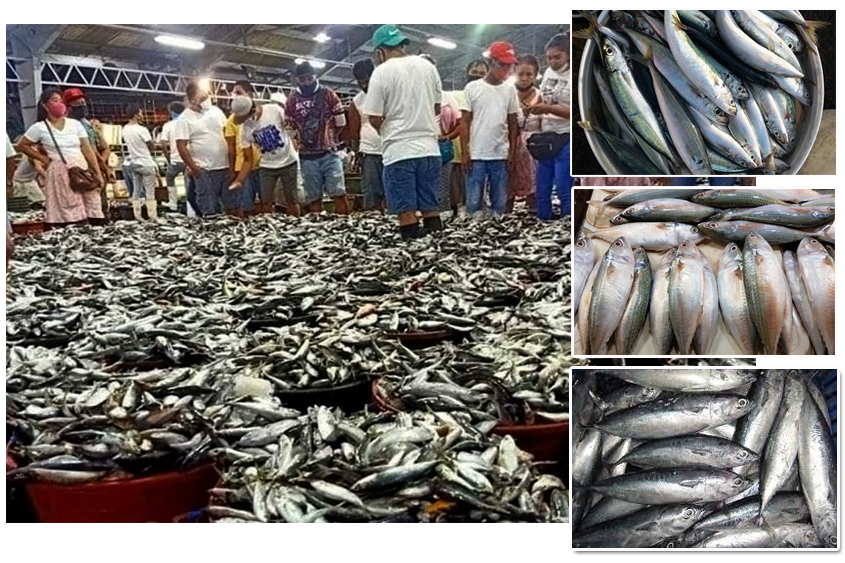
To augment current local fish production, maintain sufficient supply, and make it affordable to consumers, particularly in the last quarter of the year (Q4) and in conjunction with the closed fishing season, Agriculture Secretary William Dar has approved the issuance of a Certificate of Necessity to Import (CNI) of 60,000 metric tons (MT).
He made the decision as recommended by the Bureau of Fisheries and Aquatic Resources (BFAR), in coordination with the Philippine Fisheries Development Authority (PFDA), and in consultation with the National Fisheries and Aquatic Resources Management Council (NFARMC), and fishing industry stakeholders.
“We are doing a balancing act, wherein our primordial concern is to enhance and sustain the development of our fisheries sector, and provide our fellow citizens affordable fish on their table,” said Secretary Dar.
“Further, such policy decision eases the pressure on food inflation, thus benefiting mostly our poor countrymen whose purchasing power has been reduced due to the economic slowdown and the Covid-19 pandemic,” the DA chief added.
The approved CNI volume of 60,000 MT includes small pelagic fishes like roundscad or galunggong, mackerel, and bonito that will be sold in public wet markets for the benefit of consumers, particularly in Metro Manila and fish-deficient areas in the country.
Research studies show that marine fish catch has been declining through the years. Hence, to arrest the trend the DA-BFAR has been implementing “closed fishing season” in the country’s major fishing grounds to allow regeneration of small pelagic fishes and other species.
The closed fishing season is imposed every year in:
- Davao Gulf – June 1 to August 31;
- Visayan Sea – November 15 to February 15
- Sulu Sea – December 1 to February 28; and
- Northeast Palawan – November to January.
The CNI is valid from September 2 to December 2021. The approved quantity is slightly smaller than the supply deficiency as projected by the BFAR, at 65,000 MT in the fourth quarter.
For its part, the National Economic Development Authority (NEDA) has recommended to import a maximum volume of 200,000 MT for Q4 2021 and Q1 2022.
Under Fisheries Administrative Order No. 259, Series of 2018, Section 4, the DA Secretary, upon the recommendation of the BFAR, in coordination with the PFDA, and in consultation with the NFARMC and fishing industry stakeholders, shall issue a monthly importable volume for the duration of the closed fishing season.
The policy decision takes into consideration the historical volume of production for the last five years, the level of demand/projected consumption, and existing trends of fish prices in the market.
Secretary Dar also signed an administrative order, enumerating the guidelines to effectively implement the said CNI, which include:
- Only importers of good standing and compliant with food safety guidelines as required by DA-BFAR and/or DOH to prevent the spread of COVID-19 variants shall be allowed to participate in the importation. They should strictly comply with the Food Safety Standards;
- Prospective importers should have no SPSIC covered by the previous CNI that has been canceled. They should have imported at least seventy percent (70%) of the total volume issued during the last importation period;
- Importers should source-out supply from respectable sources and not engaged in IUU fishing;
- The 60,000 MT volume will be apportioned through an auction system. The DA-BFAR will process the SPSICs of winning auctioneers and endorse them to the DA Secretary for approval. Transfer of allocation is not allowed;
- The imported fish should arrive in the Philippines within 20 days from receipt of SPSIC. The last ship-out date from exporting country should be one month before the closed fishing season to prevent hoarding;
- From the Customs Clearing House, the importer should directly unload the imported frozen/chilled fish at its BFAR-registered cold storage facility and trade the imported products at the PFDA fish ports or PFDA-designated trading areas;
- Importers should allow BFAR inspectors, quarantine officers, and law enforcers to inspect and monitor the imported fish stored in the BFAR-registered storage facility, and provide data for the purpose of performance evaluation of said CNI; and
- Importers should sell the imported fish at P88 per kilogram (kg) wholesale, based on 2020 CNI fish auction conducted by BFAR, or lower as a result of the cost unbundling for imported small pelagic fishes. ### (DA StratComms)













